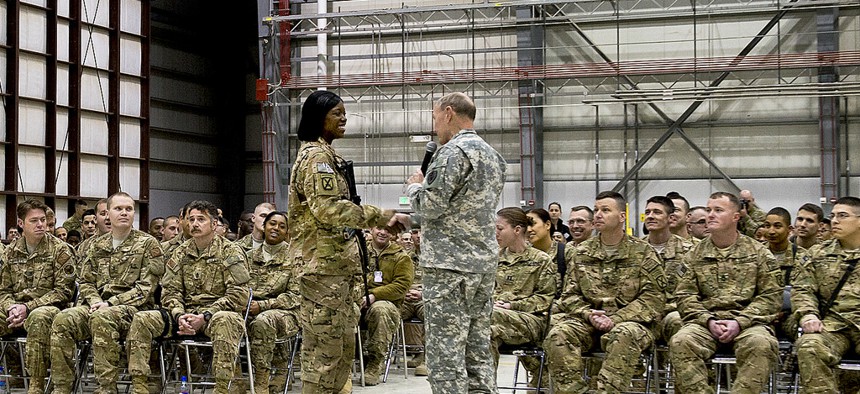
Flickr user The U.S. Army (Creative Commons Licensing)
Positive Military Recruitment and Retention Numbers Mask Quality Concerns
The military's latest recruitment and retention numbers are positive, but there are serious qualitative retention concerns that bring the military's ability to adapt to a new security environment into question.
The military’s recruitment and retention numbers are in for the first half of FY 2014, and the verdict is, yet again, good. Continuing a trend since 2008, each of the military branches met or exceeded its recruitment goals and “exhibited strong retention numbers.” Moreover, the quality of recruits is also likely to continue to increase as the Army, Air Force, and Marine Corps seek to reduce the size of their active duty corps. In the wake of these cuts, would-be recruits face the lowest acceptance rate (20%) in the history of the all-volunteer force. But while these figures suggest the military is far from facing a personnel crisis, they may only paper over serious cracks.
As the military ends an era of war in Iraq and Afghanistan and pivots to face a fundamentally new threat landscape, retaining high quality personnel forms the crux of the military personnel policy imperative, and the verdict here is far from conclusive. To adapt to a new security environment that is more dynamic, diverse, and asymmetric than ever before, the top U.S. military leader, Chairman of the Joint Chiefs of Staff General Martin Dempsey, introduced the concept of mission command. Mission command calls for a decentralization of authority and responsibility in military operations, requiring commanders to be more innovative, adaptive, and strategic. But a few compounding factors suggest that the military may have trouble retaining the highest quality officers needed for this new doctrine to permeate through the military branches.
- A more competitive civilian jobs market - As the U.S. economy recovers from the Great Recession, the military faces more and more competition from the private sector for high quality personnel.
- Fewer deployments to war zones could weaken retention - Studies show that large scale mobilization after the 9/11 attacks and deployments to Iraq and Afghanistan may have boosted retention. Absent war, troops may be less inclined to continue military service.
- Personnel reductions are likely to fall on those with direct warfare experience - After the invasion of Afghanistan in 2001, the military forces ballooned. Now, the Pentagon is considering force reductions and those most likely to face the chopping block are often those with the most battlefield experience.
- A perverse incentive scheme for promotion - For decades, a culture of toeing the line has discouraged up-and-coming leaders from taking risks and being creative in improving military institutions.
- Inadequate professional military education - The military’s network of higher educational institutions have too often emphasized training over serious education. Serious reform is crucial to ensure future U.S. military leaders develop the mental agility and strategic acumen needed to take on the new security landscape.
Individually, each of these factors is troubling for the long-term health of military personnel. Together, they pose a foreboding challenge to the military’s ability to adapt to the 21st century security environment.
This post is written by Government Business Council; it is not written by and does not necessarily reflect the views of Government Executive Media Group's editorial staff. For more information, see our advertising guidelines.



